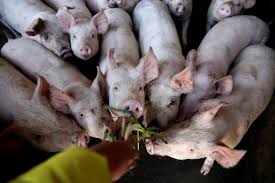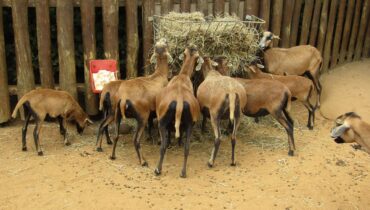In today`s article I am going to emphasis on how to start Cocoa farming in Ghana.
Keep your eyes fixed and enjoy the reading to the end.
Did you know that the cocoa growing business is one of the most lucrative agri-food businesses in Ghana?
READ ALSO:Cucumber Farming In Ghana Is Essential For Your Success – Read This To Find Out Why
Is cocoa Farming profitable in Ghana?
Despite their importance to Ghana’s development, many cocoa farming families live in poverty. Cocoa farmers earn around $ 0.40-0.45 per capita per day. This ranges from $ 983.12 to $ 2627.81 in net annual income and accounts for two-thirds of cocoa farmers’ household income.
Ninety percent of the world’s cocoa is grown on small family farms by about 6 million farmers who make a living from growing and selling cocoa beans, Fair Trade Canada says.
The largest producer in terms of volume is Côte d’Ivoire, which accounts for about 40% of the world’s supply.
Cocoa is a delicate and sensitive crop, so farmers need to protect their trees from wind, sun, pests and diseases in order to make huge profits.
With proper care, cocoa trees begin to produce pods at peak production levels in the fifth year and can continue for 10 years.
Before the cashew boom in Ghana, there was cocoa, which we counted as one of the main exports of our crops. Ghana was then the largest exporter of cocoa to Africa and included in the list of the best exporters in the world.
According to the Ghana Cocoa Association, Ghana and Ivory Coast together supply more than two-thirds of the world’s cocoa.
Cocoa (Theobroma cacao) is a small crop of perennial trees, mainly sourced from three tropical regions; West Africa, Southeast Asia and Latin America. Its height usually ranges from four to eight meters.
Although cocoa is a tropical crop, it is not very good in the sun and is usually grown in the form of other plants such as palm oil, gum and bananas and / or in the fruit of fruit trees such as avocado, bread. guava, mango, orange and coconut.
Why start a cocoa growing business?
Growing cocoa in Ghana is now one of the best opportunities for local investors in the agri-food sector, as cocoa remains one of the best-selling agricultural products on the international market.
Cocoa turnover (profit) cannot be compared with other agricultural activities, such as horticulture.
Ghana has more land for cocoa (probably) than for growing rice because international demand for cocoa products is high, in the simplest business sense to start a business where demand far exceeds supply, which means that every product grown has a ready market.
Another reason for growing cocoa in Ghana is that it is a perennial that can survive for many decades. After planting and maturing maturity, farmers can harvest from the cocoa tree for many years.
While primary cultivation can be meager when mature, cocoa trees can be a source of income for a farmer for 40 years or more.
HOW TO START A COCOA FARM BUSINESS IN GHANA
There are several factors to consider when starting a cocoa farm, including:
Large area of good soil with adequate climatic conditions and even rainfall.
The farmer must invest in good quality cocoa beans, resistant to diseases and fertile for planting.
The best climate for cocoa cultivation in Ghana
Cocoa can only be grown in very specific climatic conditions, which include a temperature between 21 and 32 ° C and 100-250 cm of rainfall, well distributed throughout the year.
Cocoa trees don’t like the sun too much and its natural habitat is under the heavy crown of a rainforest. This is why a cocoa farm is rarely found in northern Ghana.
Additionally, cocoa should be planted in the shade of crops such as oil palm, rubber, banana, mango, orange and coconut. This will ensure that the cocoa pods do not enter the direct heat of the sun.
To start growing cocoa, the investor has to purchase storage and drying facilities. Many cocoa growers have warehouses to store cocoa beans and there must be enough space outside this shop to spread and dry the seeds.
The seeds must be dried in the sun before they can be used and the drying period usually lasts two weeks.
Variety of cocoa
Criollos: considered the best and most luxurious cocoa, a variety more susceptible to pests and fungal diseases, and has a lower yield than other cocoa varieties. It is also the most expensive variety.
Forasteros: This is a very strong and resistant variety of cocoa, accounting for over 80% of world cocoa production. It is the most common variety grown in Ghana
Trinitario: is a variety that comes from the crossing of Criolla and Forasteros. It combines the firmness of Forastero with the powerful aromatic taste of Criollo cocoa.
COCOA FARM
There are several ways to grow a cocoa tree. The most commonly used method is sowing.
Sowing: The cocoa tree is grown here mainly from seeds. The beans are taken from the pods within 15 days of harvest and planted in accordance with the soil and the required climatic conditions. Such seeds usually germinate and give good plants.
Cutting: Using this method, the farmer takes cuttings with an average of three and four leaves and one or two buds. The leaves are then cut in half and the incision is placed in a pot under the polyethylene until the roots begin to grow. Once it starts to grow, it is transplanted to the farm.
There are other methods such as germination and marking.
COCOA PLANTING AND MATURITY
In Africa, cocoa is grown in forest regions for cocoa tree plantation to be suitable, enough shade is needed when the trees are still young.
The traditional method is to cut down all the trees and burn everything. But it destroys all the organic weeds, leaves and branches, making the soil bare to the sun or rain, making it less fertile.
Sometimes growers place banana trees or containers on a cocoa plantation to provide shade for young cocoa trees.
If they are planted long enough in front of cocoa trees, they provide good protection. But if they are planted at the same time as the cocoa trees, they do not protect the young cocoa trees well enough and get food from the soil.
Cocoa nursery is usually done from October to January, and transplanting in the field – from April to June.
After planting cocoa beans, it usually takes three to five years for the first crop to grow. The hybrid cocoa variety can yield in two or three years.
READ ALSO:Cashew Farming In Ghana : An Incredible Easy Method That Works For All.
Most countries have two largest production periods per year: the main crop and lower yields.
Cocoa growers use steel handles with long handles to reach the pods and cut them without damaging the soft bark of the tree. Farmers collect pods in baskets.
Post-harvest processing has the greatest impact on cocoa quality and, consequently, cocoa taste, which includes:
Fermentation and drying. The farmer removes the beans from the pods, packages them in boxes or piles them, then covers them with mats or banana leaves for 3-7 days.
The layer of pulp that naturally wraps the beans heats and ferments the beans, enhancing the taste of cocoa. The beans are then dried in the sun for a few days.
SALE, TRANSPORT AND DELIVERY
The dried beans are packed in bags and the farmer sells his product at a purchasing station.
The buyer transports the bags to the exporting company, where they are inspected, placed in sacks, sisal or plastic bags and transported to the exporter’s warehouse, where the beans are stored until they are sent to the producer.
PROFITABILITY OF A COCOA FARMER IN GHANA
The international price of cocoa beans is currently rising due to the high demand for cocoa-based products as the industry wakes up due to a possible long-term shortage of global supply.
Cocoa farms are prone to disease-intensive disease and require the use of expensive chemicals to utilize black pod disease.
Cultivation is a delicate process and the trees are sensitive to changes in weather conditions, such as excessive rainfall or drought, which negatively affect the yield per hectare.
ACTIONS FOR THE CREATION OF A COCOA FARM IN GHANA
The acquisition of land for cocoa cultivation is a cost that will vary widely throughout the world and on the national territory.
The land should be selected to provide the best soil and climate for the cocoa trees.
Establishment of a plantation. Expenditure included here includes land clearing, planting of shade and cocoa trees, pruning, weeding, use of fertilizers and pesticides, and construction of necessary infrastructure such as roads, irrigation ditches, nurseries and plantations. processing.
Seedling care: costs include pruning, weeding, use of fertilizers and pesticides, harvesting and post-harvest processing.
For more information, you can visit the International Cocoa Organization.
The largest part of the plantation establishment and maintenance costs is labor. Farm sizes vary, so labor costs vary – many small farmers work the land themselves instead of hiring workers.
Thus, the cost of a large property will be higher than that of a small owner.
Looking at the use of labor to support cocoa, it can be assumed that the average labor consumption, assuming that the worker works on plantations 230 days a year, is 3.37 ha per person per year. years.
Costs such as fertilizers and pesticides are added after labor costs; however, their use will depend on other factors such as soil quality and the level of pests and diseases.
PRODUCTS WHICH MAY BE MANUFACTURED BY COCOA
Many different types of products can be obtained from cocoa.
You can use cocoa bean peel and bean flesh and cocoa bean husks.
Here are some of these uses listed by the International Cocoa Organization;
Cocoa shell animal feed – as granulated 100% dry cocoa pods, it can be used as animal feed. Animal feed is produced by first cutting fresh cocoa shells into small flakes and then partially drying the flakes, then crushing, granulating and drying the pellets.
Production of soft drinks and alcoholic beverages – in the preparation of soft drinks, fresh cocoa juice (sweeteners) is collected, sterilized and bottled.
In the production of alcoholic beverages such as brandy, fresh juice is boiled, cooled and fermented with yeast. After 4 days of fermentation, the alcohol is distilled off.
Potassium from cocoa shell – Cocoa shell shell ash is mainly used to make soft soap. It can also be used as a fertilizer for cocoa, vegetables and food plants.
To prepare the ashes, the fresh peels are spread out to dry for one or two weeks. The dried peels are burned in an incinerator.
These products are cocoa butter, cocoa powder, cocoa liqueur.
CONCLUSION
Growing cocoa has more advantages because it offers one of the best business opportunities in the agro-industry, rather than disadvantages because it is the best-selling agricultural product in the world and global demand far exceeds supply.
It is a very lucrative business that can reduce unemployment in Ghana, but the responsibility for the success of his farm lies with the farmer.
Be prepared to do whatever you can, constantly learn best practices to leverage modern scientific discoveries and business knowledge to make your business a success.



